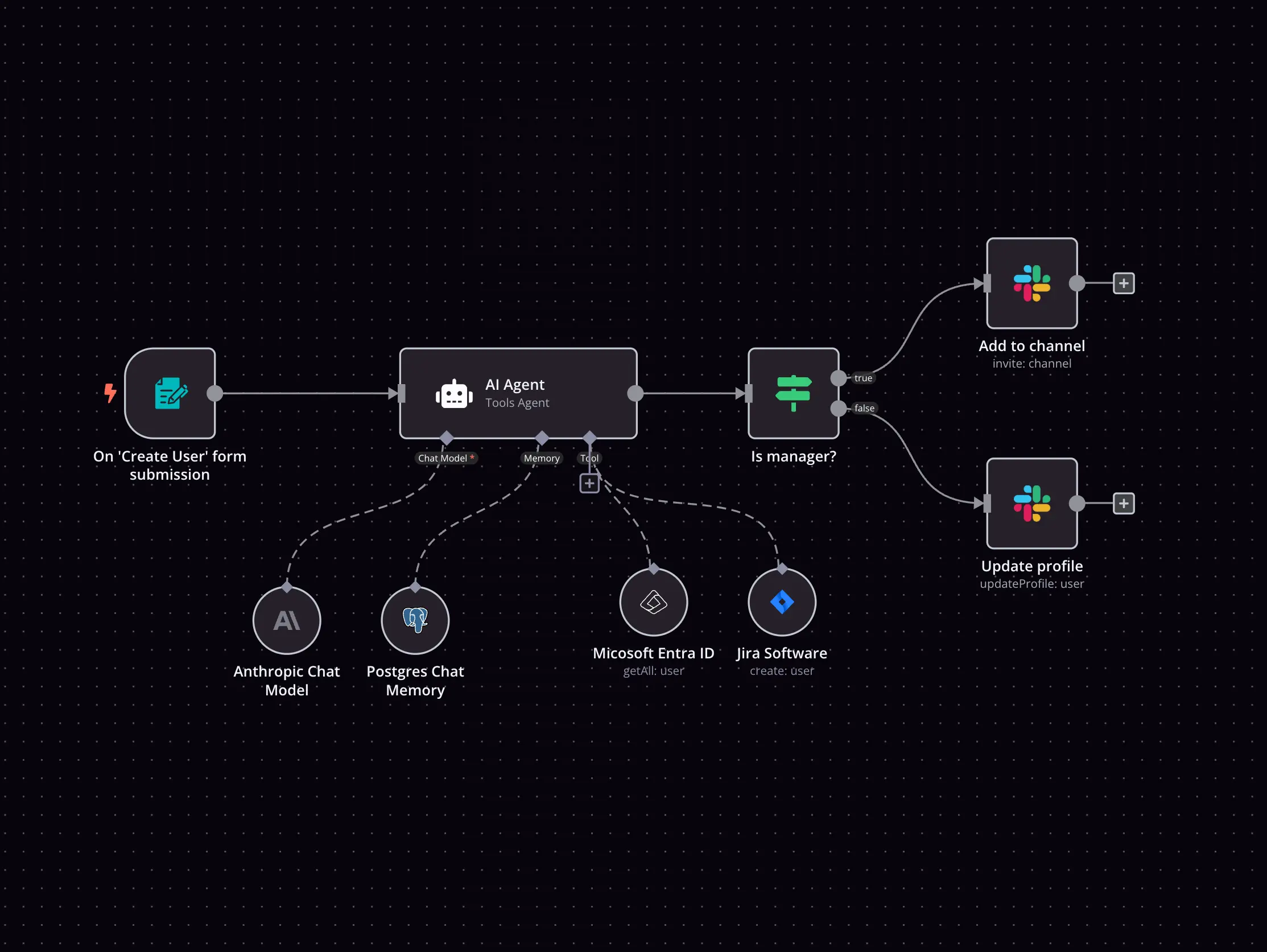Cody and GitHub integration
Save yourself the work of writing custom integrations for Cody and GitHub and use n8n instead. Build adaptable and scalable Productivity, workflows that work with your technology stack. All within a building experience you will love.

How to connect Cody and GitHub
Create a new workflow and add the first step
In n8n, click the "Add workflow" button in the Workflows tab to create a new workflow. Add the starting point – a trigger on when your workflow should run: an app event, a schedule, a webhook call, another workflow, an AI chat, or a manual trigger. Sometimes, the HTTP Request node might already serve as your starting point.
Build your own Cody and GitHub integration
Create custom Cody and GitHub workflows by choosing triggers and actions. Nodes come with global operations and settings, as well as app-specific parameters that can be configured. You can also use the HTTP Request node to query data from any app or service with a REST API.
Supported API Endpoints for Cody
List bots
Retrieve a list of all bots.
List conversations
Retrieve a list of all conversations.
Create conversation
Create a new conversation.
Get conversation
Retrieve details of a specific conversation.
Update conversation
Update the details of a specific conversation.
Delete conversation
Delete a specific conversation.
List conversations
Get all conversations.
Get conversation
Retrieve a specific conversation.
List documents
Retrieve a list of all documents.
Create document
Create a new document.
Delete document
Delete a specific document.
Create document from file
Create a document using a file upload
Create document from webpage
Create a document using webpage content
Get document
Retrieve details of a specific document
List documents
Get all documents.
Get document
Retrieve a specific document.
List folders
Retrieve a list of all folders.
Create folder
Create a new folder.
Get folder
Retrieve details of a specific folder
List folders
Get all folders.
List messages
Retrieve a list of all messages.
Send message
Send a new message.
List messages
Get all messages.
Get upload URL
Retrieve a signed URL for uploading files.
To set up Cody integration, add the HTTP Request node to your workflow canvas and authenticate it using a generic authentication method. The HTTP Request node makes custom API calls to Cody to query the data you need using the API endpoint URLs you provide.
See the example hereThese API endpoints were generated using n8n
n8n AI workflow transforms web scraping into an intelligent, AI-powered knowledge extraction system that uses vector embeddings to semantically analyze, chunk, store, and retrieve the most relevant API documentation from web pages. Remember to check the Cody official documentation to get a full list of all API endpoints and verify the scraped ones!
GitHub supported actions
Create
Create a new file in repository
Delete
Delete a file in repository
Edit
Edit a file in repository
Get
Get the data of a single file
List
List contents of a folder
Create
Create a new issue
Create Comment
Create a new comment on an issue
Edit
Edit an issue
Get
Get the data of a single issue
Lock
Lock an issue
Get Repositories
Returns all repositories of an organization
Create
Creates a new release
Delete
Delete a release
Get
Get a release
Get Many
Get many repository releases
Update
Update a release
Get
Get the data of a single repository
Get Issues
Returns issues of a repository
Get License
Returns the contents of the repository's license file, if one is detected
Get Profile
Get the community profile of a repository with metrics, health score, description, license, etc
Get Pull Requests
Returns pull requests of a repository
List Popular Paths
Get the top 10 popular content paths over the last 14 days
List Referrers
Get the top 10 referrering domains over the last 14 days
Create
Creates a new review
Get
Get a review for a pull request
Get Many
Get many reviews for a pull request
Update
Update a review
Get Repositories
Returns the repositories of a user
Get Issues
Returns the issues assigned to the user
Invite
Invites a user to an organization
Disable
Disable a workflow
Dispatch
Dispatch a workflow event
Dispatch and Wait for Completion
Dispatch a workflow event and wait for a webhook to be called before proceeding
Enable
Enable a workflow
Get
Get a workflow
Get Usage
Get the usage of a workflow
List
List workflows
Cody and GitHub integration details
Cody and GitHub integration tutorials

How to push code to GitHub: 3 techniques
Learn how to seamlessly push code into GitHub with these 3 techniques: GitHub command line; GitHub n8n node for remote repositories, n8n Git node for local repos. And grab free n8n workflows for a quick start with GitHub automations!

How to automatically manage contributions to open-source projects
Maintainers, this one’s for you: simplify your work by building a no-code workflow that assigns GitHub issues to contributors.

How to set up a no-code CI/CD pipeline with GitHub and TravisCI
Learn how Continuous Integration, Continuous Delivery, and Continuous Development work, and how you can set up a CI/CD pipeline.

How to automatically give kudos to GitHub contributors
Create a workflow that sends Slack notifications about GitHub contributors to celebrate their valuable contributions.
FAQ
Can Cody connect with GitHub?
Can I use Cody’s API with n8n?
Can I use GitHub’s API with n8n?
Is n8n secure for integrating Cody and GitHub?
How to get started with Cody and GitHub integration in n8n.io?
Looking to integrate Cody and GitHub in your company?
The world's most popular workflow automation platform for technical teams including
Why use n8n to integrate Cody with GitHub
Build complex workflows, really fast


